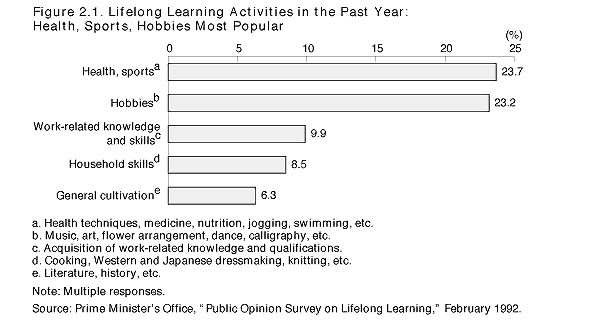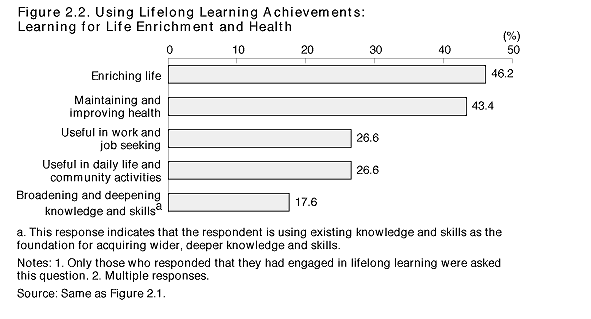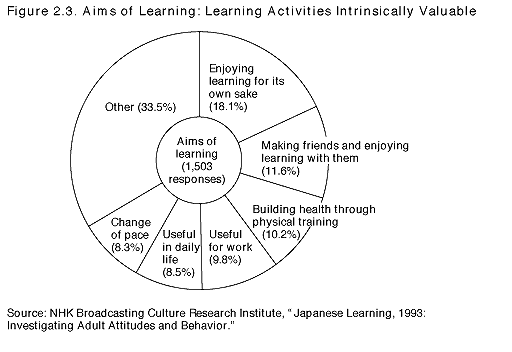| Home > Policy > White Paper, Notice, Announcement > White Paper > JAPANESE GOVERNMENT POLICIES IN EDUCATION, SCIENCE, SPORTS AND CULTURE 1996 > Priorities and Prospects for a Lifelong Learning Society Chapter 2 Section 1 2 | ||
People engage in learning for a variety of reasons throughout their lives. During the school-education phase the aims and content of learning and the types of schools are relatively well defined, but the picture is less clear where out-of-school learning is concerned.
Participants in the public opinion survey on lifelong learning conducted by the Prime Minister's Office in 1992 were asked about their lifelong learning activities in the 12 months prior to the survey. The results showed that learning activities covered a wide range of fields, the most popular areas being health and sports (health techniques, medicine, nutrition, jogging, swimming, etc.) and hobbies (music, art, flower arrangement, dance, calligraphy, etc.). Those who engaged in learning activities to acquire work-related knowledge were in the minority ( Figure 2.1 ).
Survey participants were also asked how they were using their lifelong learning achievements. More than 40% stated that they were enriching their lives or maintaining and improving their health through lifelong learning, while about 25% said that they were using their achievements in their jobs or other professional activities ( Figure 2.2 ).
In March 1992 the NHK Broadcasting Culture Research Institute conducted a survey on interest in learning. The results were published as a report titled "Japanese Learning, 1993: Investigating Adult Attitudes and Behavior." The NHK survey also included a question about reasons for participation in learning activities. The results show that 18.1% of respondents enjoyed learning for its own sake, 11.6% enjoyed making new acquaintances and learning with them, and 9.8% were learning for work-related purposes ( Figure 2.3 ). There is, thus, a tendency to view learning, which is a means of acquiring knowledge, technology, and attitudes, as an activity that has intrinsic value and as an end in itself ( chapter 2, section 1, subsection 6 ).
The scope of adult learning activities in Japan is extremely wide. Adult learning is viewed above all as an activity relating to health and sports, hobbies, and general cultivation. The main motives for learning appear to be enjoyment, life enrichment, and health.



| Back to Top | MEXT HOME |